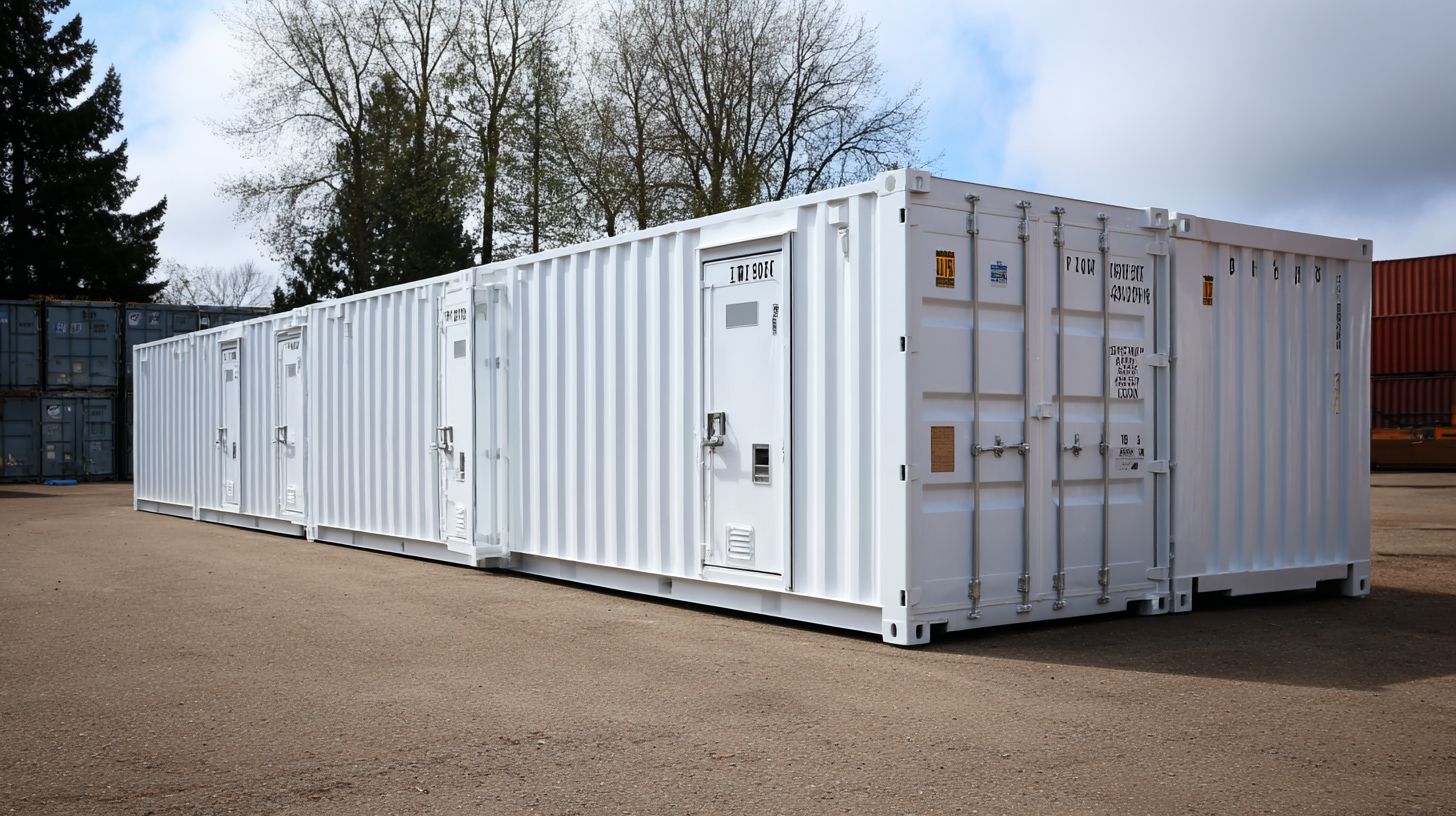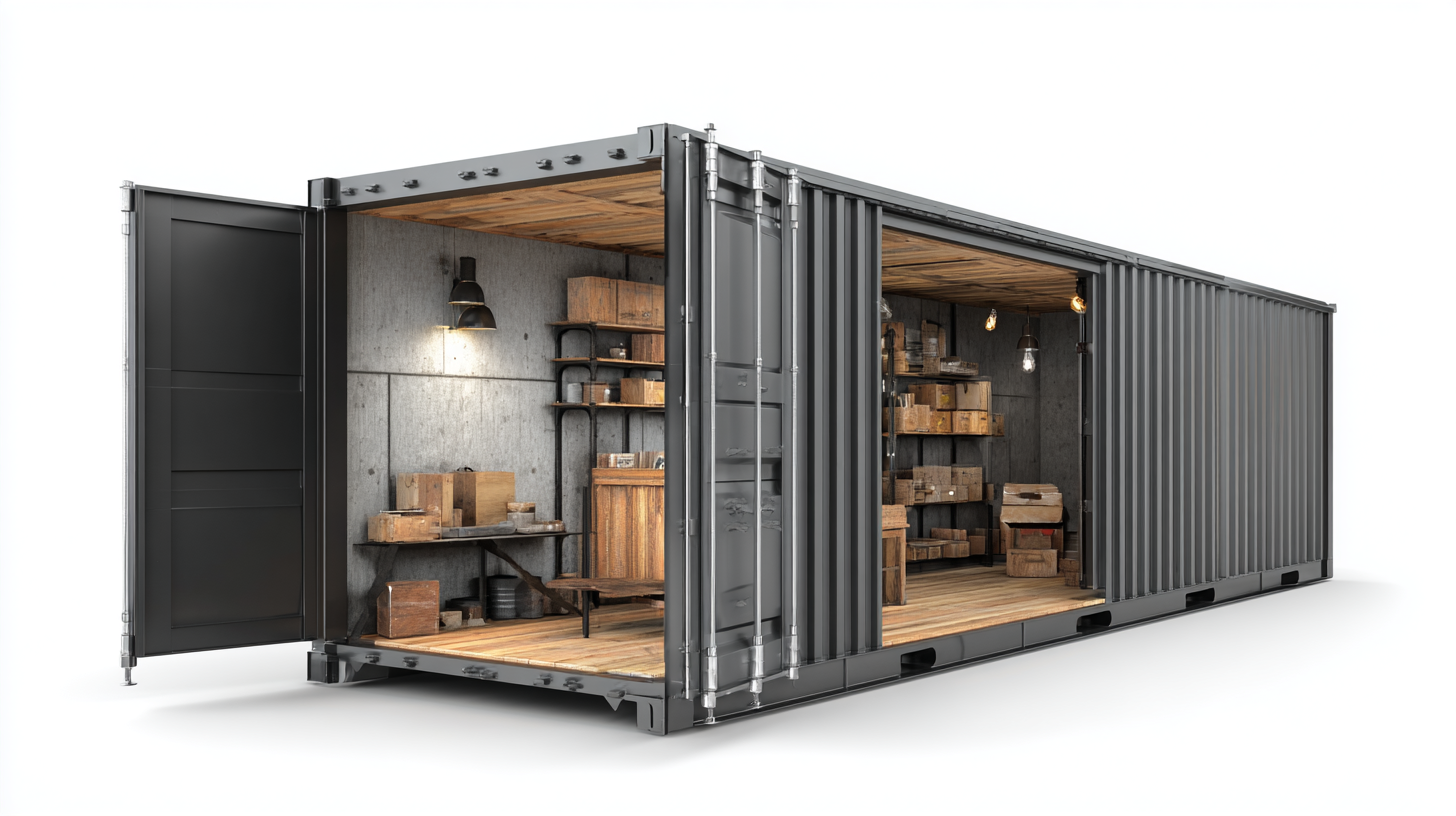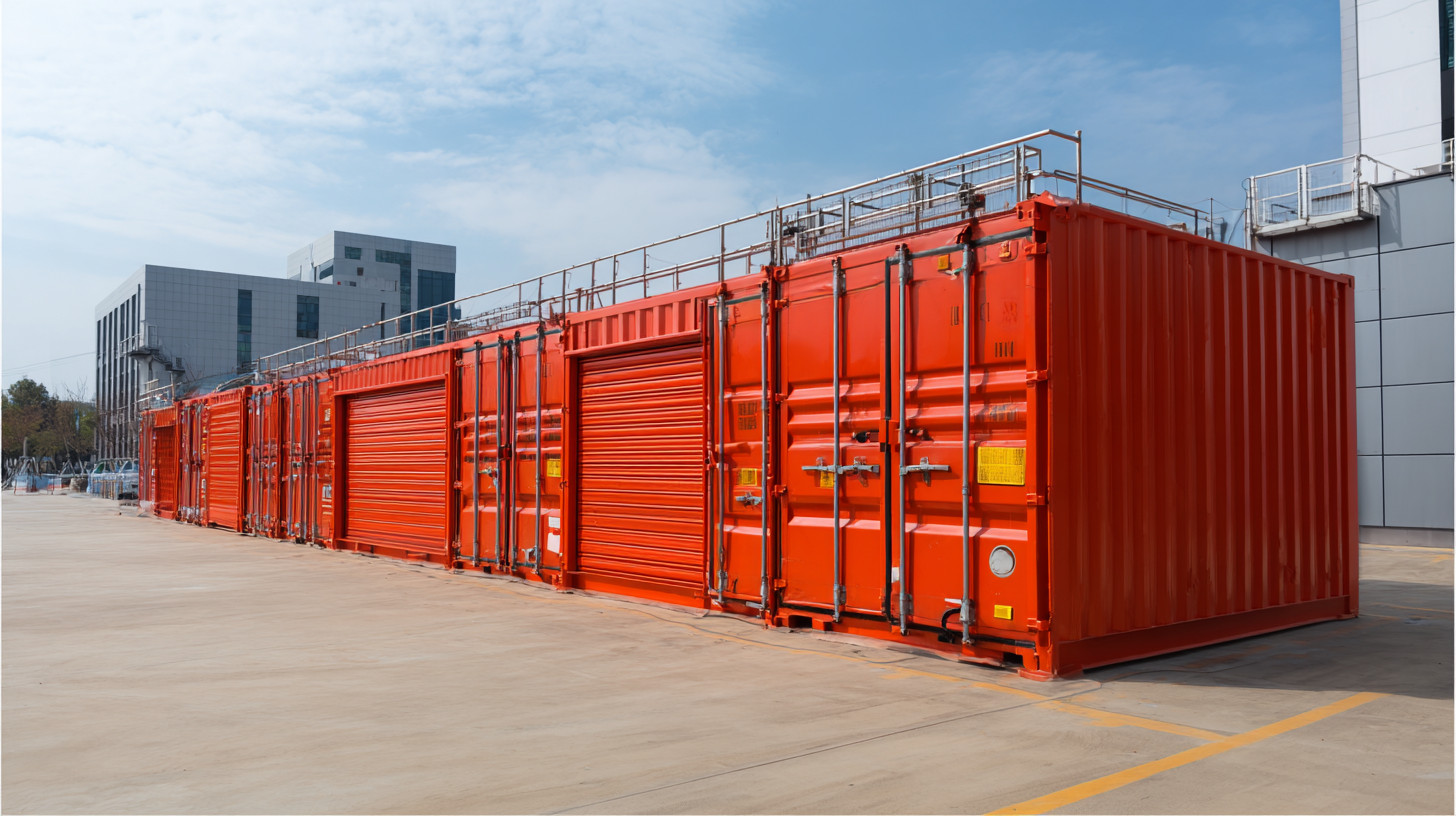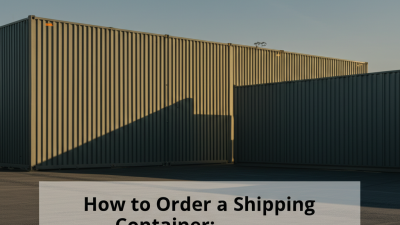Ultimate Guide to Maximizing Space with Shipping Container Storage Units
In today's fast-paced world, the demand for efficient storage solutions has reached unprecedented levels, with industries and individuals alike seeking innovative ways to maximize their available space. Shipping container storage units have emerged as a game-changer in this space, providing versatile and cost-effective options for storage needs across various sectors. According to a report by Grand View Research, the global market for portable storage containers is projected to reach $11.34 billion by 2025, showcasing the growing acceptance of shipping container storage units as a practical solution for space optimization.
Industry expert Jennifer Stein, a leading consultant in logistics and storage solutions, emphasizes the increasing relevance of these units: "Shipping container storage units not only provide a secure and adaptable option for storing goods, but they also enable businesses to utilize their space more effectively." This versatility has attracted attention from startups to established enterprises, as companies seek not only to cut costs but also to enhance their operational efficiency.
As we delve deeper into this ultimate guide, we will explore the various types of shipping container storage units, their applications, and the strategic benefits they offer. Whether you are a retail business looking to streamline inventory or someone seeking additional space for personal use, understanding how to effectively leverage shipping container storage units can lead to significant improvements in space management.

Understanding Shipping Container Storage Units: Key Features and Benefits
When considering shipping container storage units, it's crucial to understand their key features and benefits that make them a sought-after solution for maximizing space. These units are often made of durable steel, providing robust security for goods. They come in various sizes, allowing flexibility to meet diverse storage needs, whether for personal items, business inventory, or even emergency resources.
Tips: When selecting a shipping container, assess the space available at your location to ensure a proper fit. Also, consider the need for insulation if you plan to store sensitive items, as temperature control can be essential in preserving the quality of stored goods.
In addition to their practical aspects, shipping containers offer significant cost savings compared to traditional storage solutions. They can be rented or purchased, making them a versatile option for both short-term and long-term storage. The modular nature of containers allows for easy stacking and arranging, making them ideal for maximizing limited space without compromising accessibility.
Tips: Utilize shelves and organizers within your shipping container to enhance storage efficiency and keep items easily retrievable. Labeling boxes and storage areas can also save time during retrieval, helping you make the most of your space.
Ultimate Guide to Maximizing Space with Shipping Container Storage Units
| Key Features | Benefits |
|---|---|
| Durability | Resistant to harsh weather and wear |
| Portability | Easy to transport to various locations |
| Customizability | Options for insulation, shelving, and lighting |
| Security | Lockable doors to protect belongings |
| Space Efficiency | Maximizes storage in limited areas |
| Affordability | Cost-effective compared to traditional storage solutions |
Analyzing Cost-Effectiveness: Shipping Container vs. Traditional Storage Solutions
The cost-effectiveness of shipping container storage units compared to traditional storage solutions presents an intriguing analysis for both businesses and individuals seeking efficient space management. The global intermediate container market is projected to increase from $10.47 billion in 2025 to $15.62 billion by 2032, with a compound annual growth rate (CAGR) of 5.88%. This growth indicates a rising demand for innovative storage options, particularly as consumers and companies seek to optimize space while managing costs.
Moreover, the shipping container ESS (Energy Storage System) market is experiencing an even more remarkable trajectory. Forecasted to grow from $14.7 billion in 2024 to approximately $55.1 billion by 2032, the expected CAGR of 15.2% highlights the increasing adoption of container-based solutions across various sectors. These figures not only underscore the economic viability of shipping container storage but also reflect a broader trend towards sustainable and scalable storage infrastructures that can cater to diverse needs, from residential to commercial and energy sectors. As more people recognize the flexibility and efficiency offered by shipping containers, the shift away from traditional storage units is likely to continue.

Space Optimization Strategies: Effective Layouts for Container Storage Units
When it comes to container storage units, effective layouts are crucial for space optimization. One of the most efficient strategies involves a modular arrangement. By stacking containers or placing them side by side, you can create a dynamic environment that allows for increased accessibility and better organization. Utilizing vertical space is vital; adding shelving systems inside the containers can help keep items elevated and organized, making every inch of space count.
Another key strategy is to categorize items based on frequency of access. Designate specific containers for seasonal or rarely used items and keep more frequently accessed goods readily available. Additionally, implementing transparent storage bins can facilitate easy visual inventory, further enhancing the layout's efficiency. By considering the flow of movement and access routes, you can ensure that your container storage remains functional and maximizes the usable area, preventing clutter while providing a structured environment for your belongings.
Ultimate Guide to Maximizing Space with Shipping Container Storage Units
This chart illustrates various space optimization strategies for shipping container storage units based on effective layouts.
Regulatory Considerations: Permits and Zoning for Using Shipping Containers
When considering the use of shipping containers for storage, understanding regulatory considerations such as permits and zoning is crucial. According to a report by the National Association of REALTORS®, an increasing number of homeowners are utilizing shipping containers, leading to growing scrutiny from local governments regarding their placement and use. Each municipality may have specific zoning laws dictating where shipping containers can be located, which can vary significantly even within the same state.
In many cases, obtaining a permit is necessary before placing a shipping container on residential or commercial property. The Shipping Container Housing Initiative reports that more than 50% of communities across the U.S. require some form of permit for such installations. This highlights the importance of conducting thorough research and engaging with local zoning boards to ensure compliance. Additionally, some areas may have restrictions on the aesthetic appearance of shipping containers, necessitating modifications or enhancements to meet neighborhood standards. Understanding these regulatory considerations not only avoids legal challenges but also maximizes the effectiveness of using shipping containers as a storage solution.
Innovative Storage Solutions: Customizing Containers for Unique Space Needs
When it comes to optimizing space with shipping container storage units, customization is key. These versatile containers can be tailored to meet unique storage requirements, making them an ideal solution for both residential and commercial users. From adding shelving and climate control systems to implementing security features, customizing a shipping container allows individuals to create a functional space that perfectly fits their needs. This level of personalization ensures that every item stored is easily accessible and well-organized.

Moreover, the innovative potential of shipping container storage extends beyond mere customization. Many users have transformed these containers into multi-functional spaces, such as offices, workshops, or even living areas. By utilizing modular designs and creative layouts, individuals can maximize the use of limited space while maintaining aesthetic appeal. With added features such as windows, doors, and exterior finishes, shipping containers can seamlessly integrate into any environment, offering a unique solution that enhances functionality without compromising style.
Related Posts
-

Exploring the Versatility of Storage Shipping Containers for Home and Business Solutions
-

The Ultimate Guide to Choosing the Right Movers Containers for Your Next Move
-

Unlocking the Potential of Shipping Containers: Sustainable Solutions for Modern Logistics
-

How to Order a Shipping Container: A Step-by-Step Guide for Beginners
-

Exploring Innovative Uses for Construction Containers in Modern Architecture
-

Exploring the Benefits of Container Trailers for Efficient Transportation Solutions
